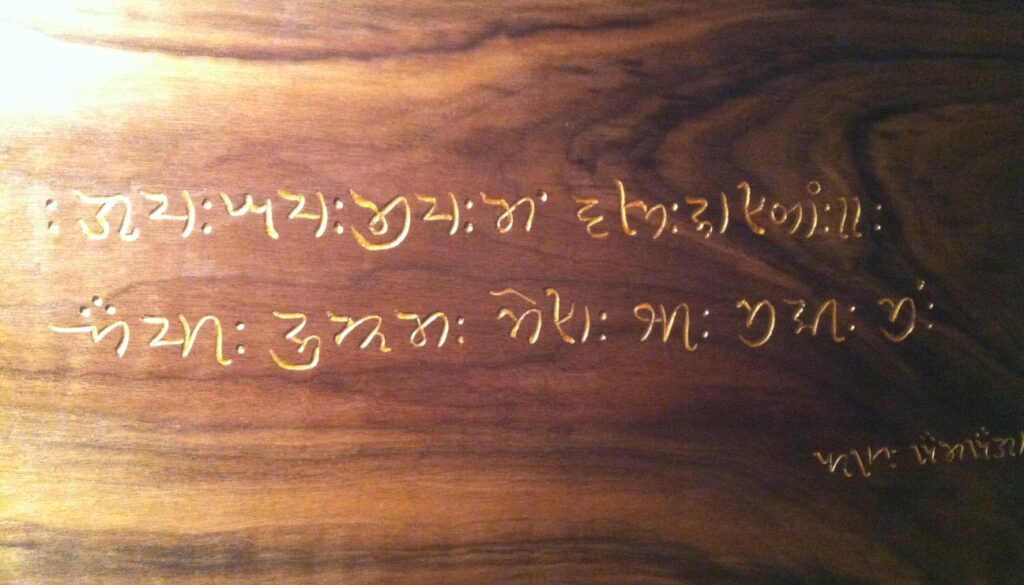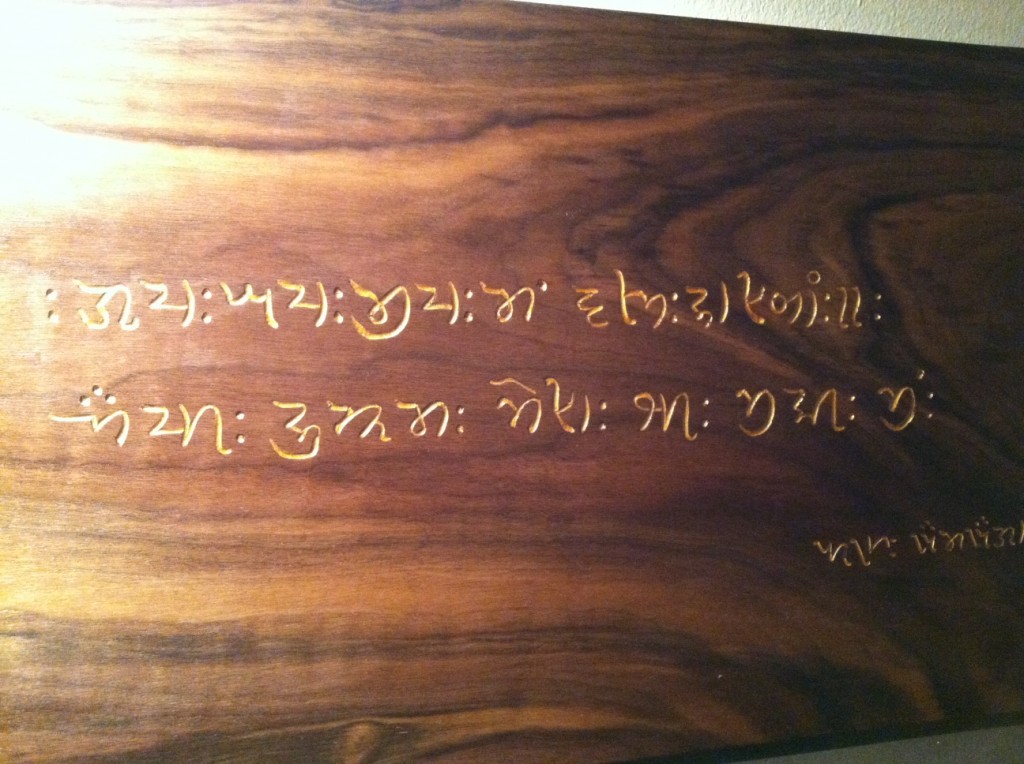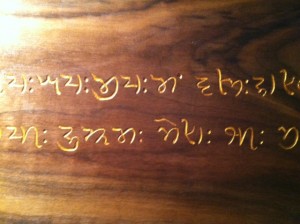The Latest: Khojki
One of the great delights of this project is being sent a script I’ve been trying to track down for years. One of the greater delights is being sent a script I didn’t even know existed.
A month or so ago I got an email from Tazim Kassam, who teaches at Syracuse University. He wrote, “I work on pre-modern (12-18th C) devotional literature in the Indian subcontinent. It was an oral tradition and initially put to writing in a secret script called Khojki. The poetry belongs to Satpanthi Khojas, now known as Ismaili Muslims, and the secret script was developed to hide their identity from Muslims who persecuted them for their open-minded approach to the Indic religious worldview. The manuscripts were then transcribed into Gujerati, and now there are no khojki versions of these poems, known as ginans. [You can look at my book, Songs of Wisdom and Circles of Dance (SUNY: 1995) to get an introduction.] There are very few Ismailis who can read this script now, and most likely it will eventually be forgotten.”
A secret and endangered script? How could I resist?
Tazim sent me a sixteenth-century hymn by Pir (that is, spiritual master) Shams,and after some discussion I decided to carve just one verse, which (in Tazim’s translation) reads,
“Maker of water and earth, the roots of Creation,
O ‘Ali! Indeed, yours alone is the [final] command!”
I asked him whether he thought it would work better with black lettering on a light wood or gold lettering on a darker wood. “Gold lettering on darker wood,” he replied. “The poetry is considered divinely-inspired so I think the gold will be a fine choice. I hope I get a sliver of it?”
Again, how could I resist? So I carved two copies, one for him and one for the Alphabets.
One last observation: I’m trying to get away from slavishly copying some Unicode font (not that I don’t admire the Unicode gang and the vital work they’re doing), so I carve the khojki by examining the pen-strokes. The pen won’t behave the same way on the page as the gouge does on the wood, but I’m hoping to capture the same approach or attack, hoping to get into the writer’s mind: this way, then around with this flourish, using a gouge of the right width so I make almost no corrections, I’m almost writing.
When the whole thing is finished I discover a tiny section where the gold paint hasn’t quite run up the the lip of the cut, and for an instant I think of going through all the stages necessary to fix it—and with black paint on light wood I might have to do that. But in the end there’s no denying—this is a script, not a print, and nobody’s writing is perfect. Small mistakes are what will give it that sense of spontaneity and life.
August 9, 2012




August 9, 2012 @ 10:55 pm
Once again, you amaze. This is gorgeous.
August 10, 2012 @ 1:40 am
Thanks, Maarten. This was, I have to say, a very special piece of walnut. Credit to North End Hardwoods in South Burlington.
August 10, 2012 @ 4:56 am
It is a very beautiful script and the story around it gives it a wonderful feeling of something hidden. I like it.
On a different note, i think you could have a side job as a written alien languages consultant for the movie industry.
August 10, 2012 @ 5:13 am
Another really gorgeous example of calligraphic lettering — I love the loopy circular strokes and especially the colons which seem to keep repeating, “Don’t lose focus — pay attention, this is important!” —
Thanks for keeping us posted. This is turning into quite the project and I enjoy reading about your process with these types of wood and techniques.
August 10, 2012 @ 10:00 am
Thank you for the posting updates on your progress and contacts.
Obscure alphabets, what lost treasuries. Your efforts as always appreciated by calligraphers.
Beautiful flow with the script, and the contact information.
August 10, 2012 @ 1:25 pm
Also love this one for it’s beauty as well as its marvelous history…
August 11, 2012 @ 10:17 pm
Ditto on what Joanne said!
August 11, 2012 @ 10:57 pm
Thanks!
August 12, 2012 @ 2:27 am
Scott , what is or was your own area of study?
August 17, 2012 @ 4:51 am
What a beautiful find! Hope you discover and document many more alphabets!